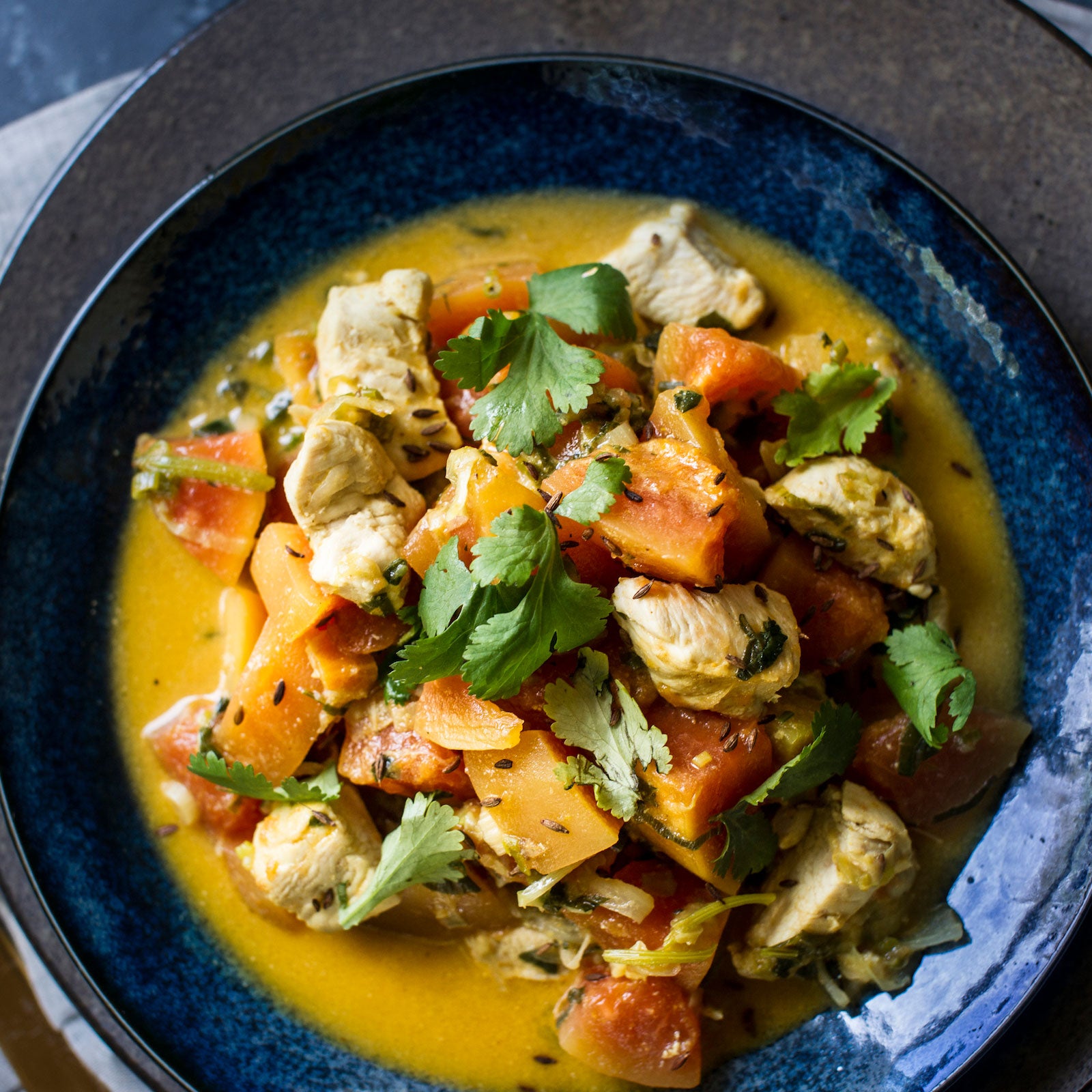Anyone with a╠řthing for endurance knows that a long run can be hard on the stomach. Long-distance running poses a greater risk of gut damage than other endurance sports, says Ricardo Da Costa, an exercise scientist at Monash University in Melbourne, Australia. In ultramarathons spanning four hours or more, no one is safe;╠ř of Western States Endurance Run competitors found that 96 percent reported GI distress.
ÔÇťAs soon as you start to go into competitive, intense endurance work, it just shreds the gut to bits,ÔÇŁ says Da Costa. He means that literally: the strain of high-intensity, sustained╠řexercise can lead to cell death and small lesions in the╠řstomach lining. ThatÔÇÖs why scientists, including Da Costa, are studying how to mitigate the effects of strenuous exercise on the digestive tractÔÇöand what we eat before and after long runs can make a big difference.
Your Gut On Ultrarunning
When you run, blood flow is diverted from the gastrointestinal╠řtract to the muscles at work, providing╠řthem with oxygen and nutrients. In an hour of moderate exertionÔÇöjogging or light runningÔÇö to the gut is lost.
The nervous system also plays a part in GI distress. Running ignites the bodyÔÇÖs fight-or-flight response and the release of stress hormones, which shuts down digestion. This makes sense, evolutionarily speaking. ÔÇťWhen youÔÇÖre in a fight or running away from something, you donÔÇÖt really need to digest,ÔÇŁ says Da Costa. In this compromised state, the stomach has a hard time processing the carbs and fluids needed to fuel exercise.
Over an extended period of time, runningÔÇöespecially ultra events that last four or more hoursÔÇöcan wear away at the lining of the stomach and intestines. With each run, cells in the gut die when starved of oxygen-rich blood, causing small cuts. These two processes especially disturb the upper gut╠řand can bring on╠řnausea, bloating, and vomiting. In the long term, continued wearing away of the GI tract can exacerbate symptoms of inflammatory bowel disease, such as diarrhea and abdominal pain, particularly╠řin people predisposed to such disorders.
Hydration and Diet Can Help
Hydration and careful fueling can reduce gut distress in endurance athletes. Drinking enough fluids soothes the fight-or-flight response, reducing blood diversion. Eating small amounts of carbohydrates helps, too. ÔÇťIf the gastrointestinal tract senses thereÔÇÖs food along it, it keeps blood flowing to the area,ÔÇŁ says Da Costa. The ideal rate is around╠ř, but that varies greatly between individuals and how much their stomach can handle.
In a╠ř, Da Costa and his colleagues found that foods╠řhigh in fermentable carbohydratesÔÇölike cowÔÇÖs milk, onions, and whole-wheat pastaÔÇöcause greater GI distress than other foods╠řwhen eaten before a long run. When bacteria in the gut ferments those carbs for fuel, the process creates gas and water. This leads to pressure buildup in the intestine, bloating, and gas. The raised pressure in the intestine also signals to the stomach to stop digesting.╠ř
Da Costa found that most participants who changed╠řup their food choice before a╠řlong╠řexercise╠řsession╠řreduced adverse╠řsymptoms during activity by over 60 percent. These changes help reduce symptoms like nausea and gassiness╠řand allow athletes to reap more nourishment from their prerun meals, because the nutrients from those foods are fully absorbed.
Run-Ready Recipes
To put these findings into practice, Da Costa and other nutrition experts from Monash University recently published a cookbook,╠ř, which features recipes fine-tuned for endurance athletes. Here are two of Da CostaÔÇÖs favorites:
Chicken Papaya Curry with Rice
(Eat Three to Four Hours Before Exercise)
This meal is high in carbohydrates, protein, vitamins, and mineralsÔÇöall important for fueling a big run. The authors swapped out mango for papaya, which produces less gas and water in the gut, and opted for lactose-free dairy. Makes four servings.
Ingredients
-
1 cup washed basmati rice
-
2 tablespoons╠řolive oil (or garlic-infused oil)
-
2 skinless chicken breasts, diced
-
8 green tips of spring onion, chopped
-
2 cups white cabbage, shredded
-
1 large papaya, skinned, seeds removed, and cut into small cubes
-
1 handful of fresh coriander, finely chopped
-
1 heaped teaspoon fresh ginger, grated
-
1 chicken-stock cube, or stock powder dissolved in 6-7╠řounces╠řof hot water
-
1 handful of dried cranberries
-
1 teaspoon╠řcumin seeds
-
2 heaped teaspoons╠řmild curry powder
-
Salt and pepper to taste
-
3-4╠řounces╠řlactose-free skim milk
- 2 heaped tablespoons╠řreduced-fat, lactose-free╠řcream
Directions
-
Prepare and cook rice as indicated on the rice packet.╠ř
-
While the rice is cooking, place olive oil, chicken, spring onion, and cabbage in a large nonstick pan. Cook over╠řmedium heat, stirring occasionally until cabbage is lightly brown and chicken is cooked through (the center of the meat has turned white). Add the papaya, coriander, and ginger. Stir to mix and cook for a further five╠řminutes.
-
Add the chicken stock, cranberries, cumin, curry, salt, and pepper, and stir thoroughly. Cover and allow to simmer for a further five╠řminutes.
-
Add the milk and cream, then simmer for another five╠řto eight╠řminutes, reducing the heat to low and╠řstirring occasionally╠řuntil the sauce has thickened slightly.
AthleteÔÇÖs Omelet╠ř
(Eat After Exercise)
This omelet╠řis high in protein, carbohydrates, and fatsÔÇöingredients crucial to muscle repair, recovery, and growth. Garlic-infused oil replaces bloat-inducing raw garlic, and lactose-free dairy keeps the active stomach happy. Makes four to six servings.
▒§▓ď▓Á░¨▒╗ňż▒▒▓ď│┘▓§╠ř
-
3-4╠řounces lactose-free skim milk
-
12 eggs (6 whole eggs plus 6 egg whites), beaten
-
1Ôüä2╠řteaspoon minced chives
-
Salt and pepper to taste
-
2 tablespoons╠řgarlic-infused olive oil
-
1 medium tin new potatoes, drained and diced
-
1 small green bell pepper╠řdiced
-
1 medium tin baby carrots, drained and sliced
Directions
-
Place the milk in a medium mixing bowl. Add the eggs, chives, salt, and pepper, and mix thoroughly.
-
Preheat the broiler to medium.
-
Add the olive oil to a medium oven-resistant nonstick pan. When the pan has heated through, add the beaten eggs. Immediately sprinkle the potatoes, pepper,╠řand carrots evenly across the uncooked egg mix. Place the pan back on the heat for four╠řto six╠řminutes until a solid base has formed, taking care not to overcook the eggs.
-
Remove the omelet╠řfrom the heat, and place the pan under the broiler until the top has become roasted.
-
Remove from the oven and allow to cool before cutting into slices.
╠ř


